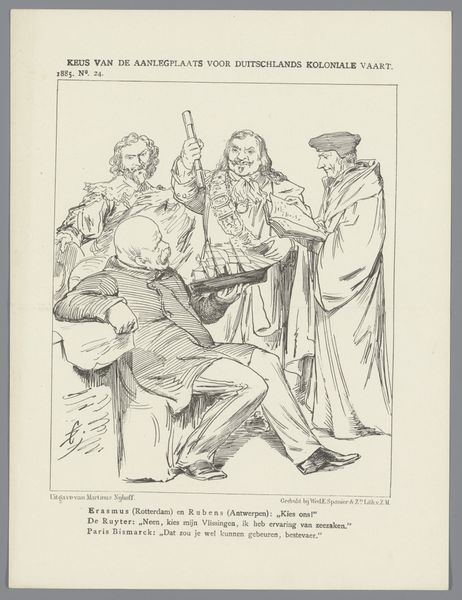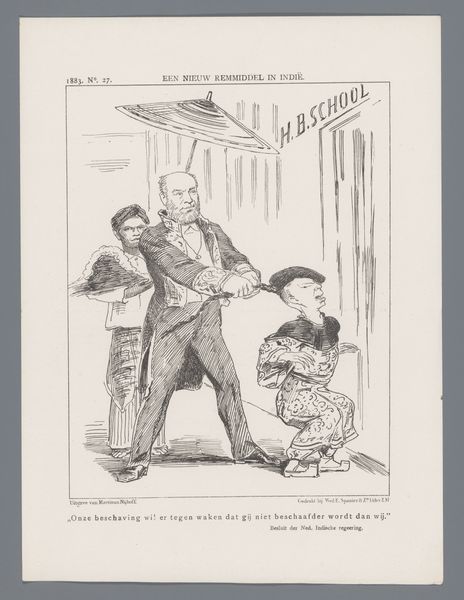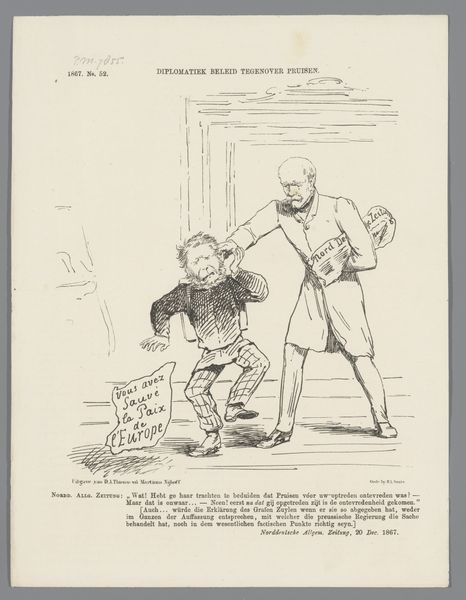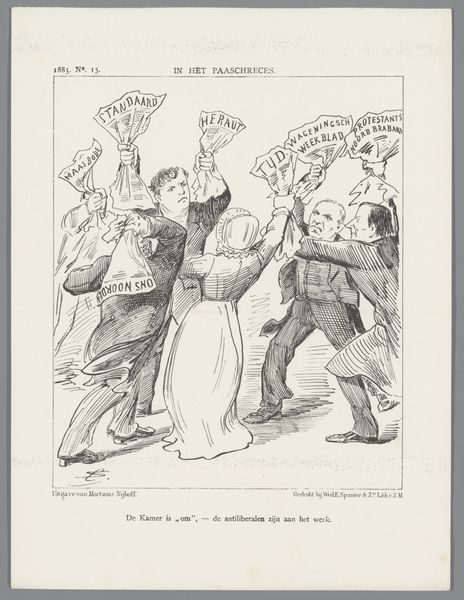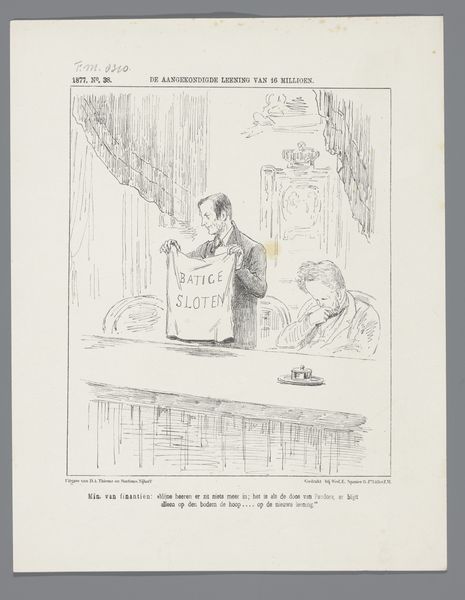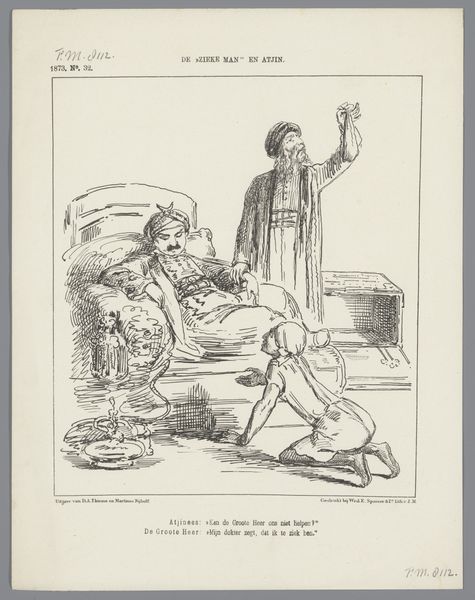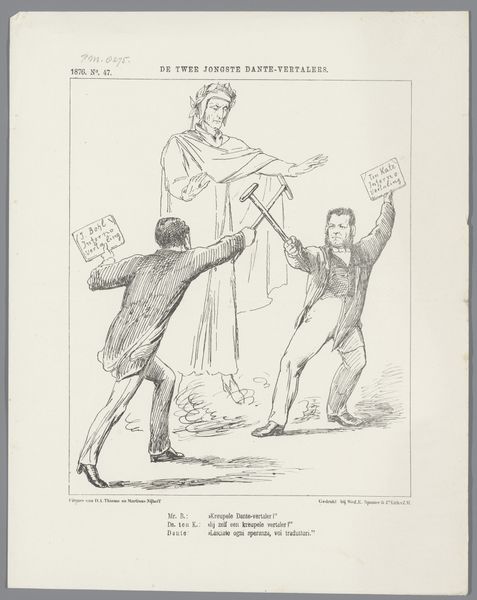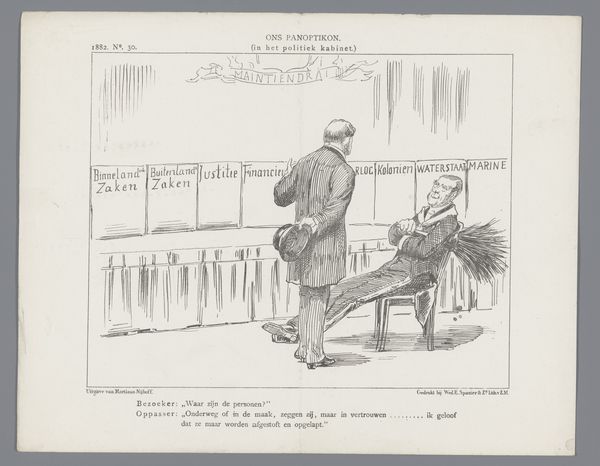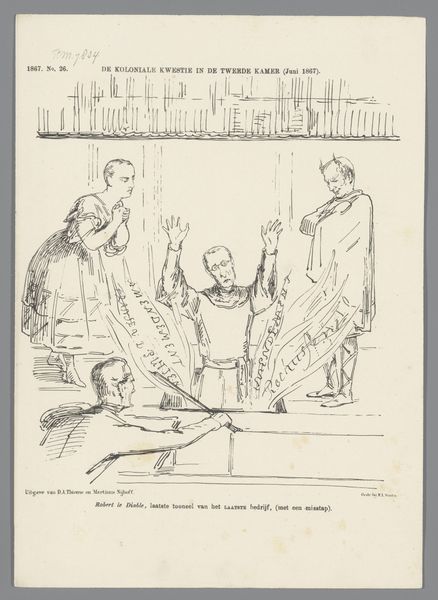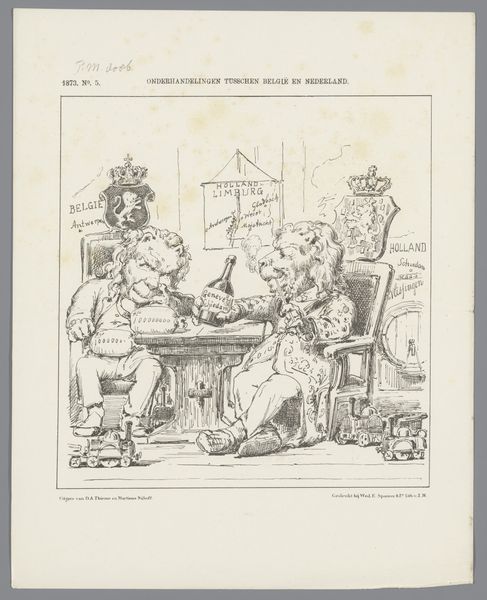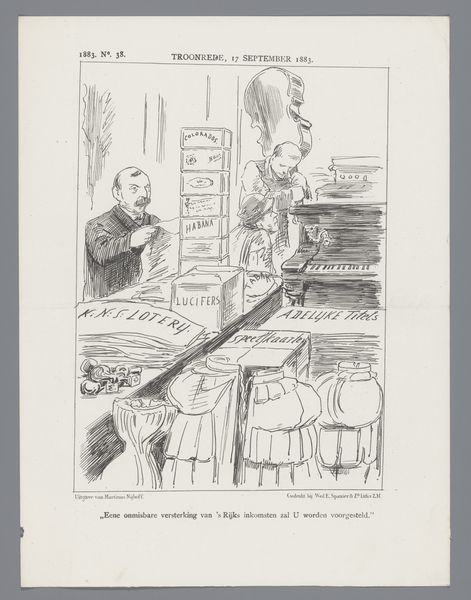
Dimensions: height 275 mm, width 215 mm
Copyright: Rijks Museum: Open Domain
Curator: This lithograph, titled "Spotprent op Atjeh problematiek, 1883" by Johan Michaël Schmidt Crans, offers a sharp commentary on Dutch colonial involvement in Aceh. The print utilizes ink and pen to illustrate political tensions. Editor: It’s stark, isn’t it? The figure of death looming behind the seated man—there’s a real tension created by the contrast of that frenzied, active figure behind someone who appears world-weary and burdened. Curator: Indeed. Crans employs orientalist tropes to satirize the Dutch parliament's debate over the Aceh War. We see a skeletal figure brandishing a sword, labeled ‘Atjeh,’ pointing menacingly at the Minister of Colonies, who is buried behind paperwork. Editor: And what about the lines? I notice how dense and almost frantic the lines are in the skeletal figure, juxtaposed with the more subdued and careful strokes around the minister. Is this a way of signifying action and inaction? Agitation versus stasis? Curator: Precisely. The composition clearly criticizes the prolonged military engagement, suggesting that the constant debate and the loss of lives in Aceh haunted Dutch politics. The house on the table symbolizes Dutch presence in Aceh, but its miniature form suggests fragility. The romantic elements serve to evoke a sense of national urgency. Editor: And the text below? Is that part of the intended political messaging? Curator: Yes, the inscription provides the biting punchline: “Minister of Colonies: ‘I will study the affairs of Atjeh.’ The others: ‘I don’t study, I strike.’” This highlights the government's hesitancy and its reliance on brute force over diplomacy. It emphasizes the broader political struggles within the Netherlands itself concerning its colonial practices. Editor: What stands out to me is the work's enduring relevance; it acts as a harsh visual critique not just of colonial policy but of the political process itself. The stark interplay of lines and symbols remains just as cutting today. Curator: Yes, its power lies in reminding us how political imagery can reflect on power struggles that may not be evident at first.
Comments
No comments
Be the first to comment and join the conversation on the ultimate creative platform.
